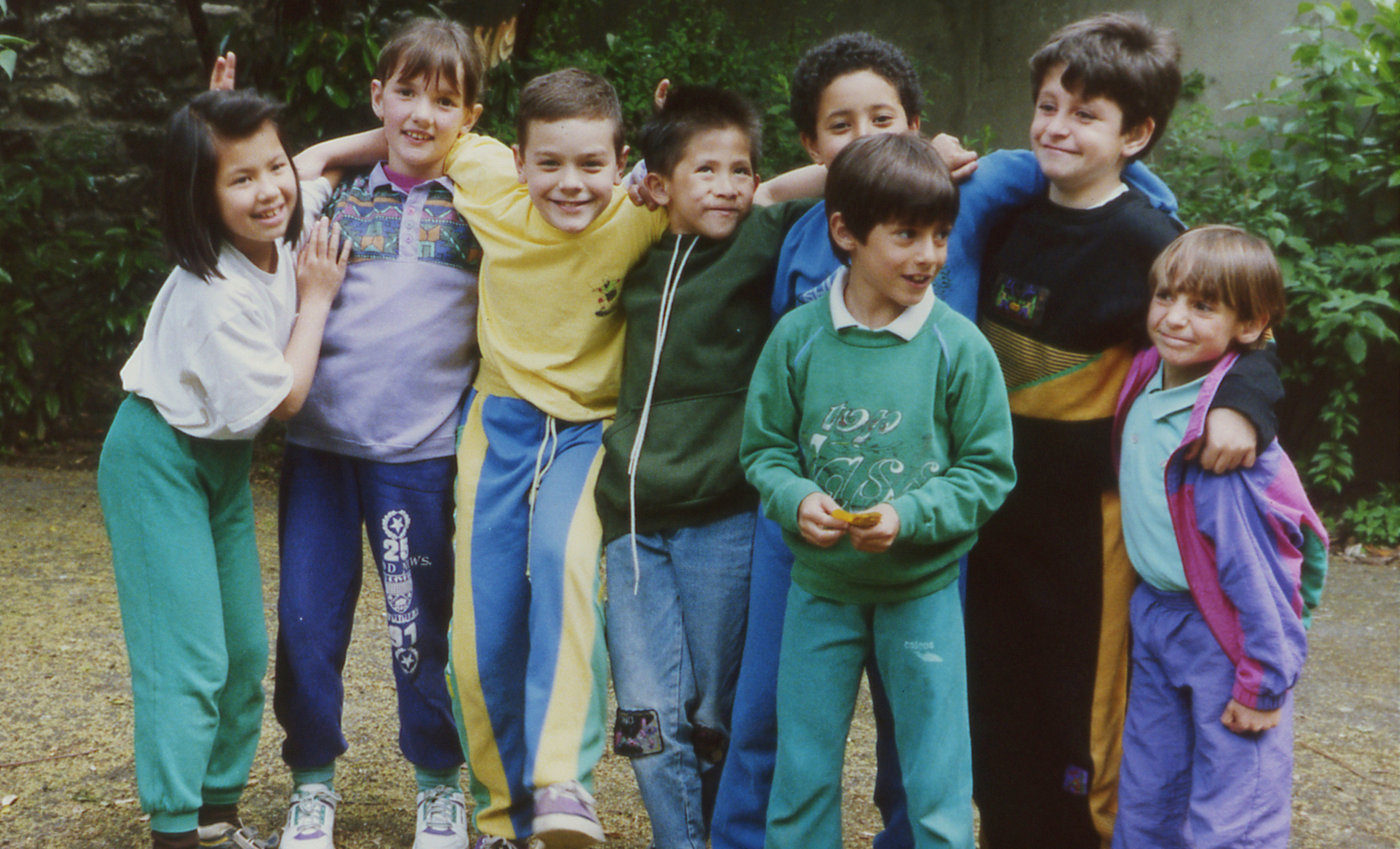Signed “cinema”
Olivier Séguret / Libération – March 4, 1993
Having set off to discover the Land of the Deaf, Nicolas Philibert returns with a story full of strange characters who do not speak but “sign”. A language whose grammar and rules are close to those of film.
Films rarely have a meaning. Nicolas Philibert’s Le Pays des sourds (In the Land of the Deaf) has the rare privilege of having found its meaning along the way, according to a fine principle of moral justice dictating that, having set off without luggage but with a great deal of love and curiosity for the land of those who cannot hear anything, the filmmaker has returned enriched with an extraordinary story. Not a particularly simple story but a very touching one, full of strange and powerful characters, on whom the virtuoso gestures of their language confer a sort of occult power.
All these adults speak and all these children are learning to speak, but with signs, according to the codes of a language put together since the dawn of time. With lively and magical gestures, a few snatches of which we instinctively comprehend but that which speakers and hearers are cut off from most of the time. However, we can tell that it would not take much of an effort from either side to meet up, for what Nicolas Philibert discovers, as we do along with him, from the first steps of his journey, his magnificent intuition, is that sign language is a language close to the cinema and that its grammar and laws belong to a related line. Not only because we can trust the deaf to be especially attentive to images but, above all, as the linguist William C. Stokoe writes, “This language continually shifts from normal vision to close-up, then to the medium shot and once again to the close-up, exactly in the same way that a film editor works… Not only does the disposition of the signs call to mind an edited film more than a written narration, but each ‘signer’ is positioned like a camera.” (1).
In opening up this theoretical abyss almost inadvertently, Philibert nonetheless enters with measured steps, with desire, caution and reflection, especially as all the fairy godmothers of the cinematic language can legitimately be summoned to this summit meeting. We can thus imagine that, with such ideas in mind, the director has set his ambitions very high. This vision of sign language as a human and incarnate metaphor for the cinema will naturally lead him to use all the resources at his disposal to feed it.
Having enrolled, for the film’s requirements, in a beginners’ sign language class, Philibert first of all discovers that his teacher, totally deaf, uses drawings similar to those of a storyboard as an educational tool designed to get across, in terms of framing, the space that is suited to this language. “Not only does signing demand extreme precision, but it mustn’t be too constrained or too ample so as to find its place in a space that corresponds exactly to what filmmakers around the world call a medium close shot. But there are also signs that have to be made in close-up and others that even include zoom movements.”
Similarly, we need to point out the crucial importance of light in the lives of the deaf since darkness or shadows deprive them of all possibility of expressing themselves. In the same way, for the deaf, there cannot be any voice-over or off-screen action, so there is no possibility of filming them in close-up or slipping in matching shots as this could break the thread of their speech. Forced to invent new filming methods to adapt to his subject, Philibert seizes this opportunity to work on the very matter of cinema. Inevitably, Philibert reached this point too: “Of course, a film like this could not ignore the question of sound. It was inherent in the subject itself. But, for a very long time, I was barking up the wrong tree, obstinately attempting to reproduce the way in which the deaf perceive sound. It didn’t work. So I returned to simple ideas.” Ideas that we see at work in the film, in all their clear self-evidence, ideas literally unheard of before.
But, however elevated the nature of his project, Philibert never pretends to dominate it. What he offers is, in a way, a gift of gratitude to match the welcome that he was given in the land of the deaf. Rather than build for his hosts an umpteenth little socio-documentary chapel, he opens the portals of cinema’s cathedral for them, making a film not about them but for them and everyone, even if it is more often than not generously subtitled for the deaf. A film that seizes the opportunity for the cinema to talk about the deaf and vice versa. A film rich with a thousand nuggets of useful information on deaf culture in which the “non-hearers” do not hesitate to reveal to “hearers” a few of the considerable advantages of their lot: the universality of communication (“In two days, I can talk with a deaf Chinese person.”), the extreme acuity of their gaze and, last of all, the “secret society” dimension of this language that allows them to talk without the non-deaf realizing, right in front of them.
With hands or with words, the movie tom-toms have to sound out for In the Land of the Deaf. You can also combine the two: cross your fingers while wishing that word-of-mouth will work perfectly.
(1) Quoted by Oliver Sacks in Seeing Voices, 1989.
